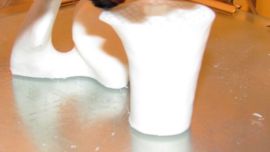In late July, Mauricio Macri took a trip to Córdoba, as part of his campaign for re-election. It was 20th time the Juntos por el Cambio leader has visited the region as president.
During his visit, he described the province as “the motor of the country” as he sought to charm voters, explaining that he has visited the region so many times over the past four years because “we will drive change from [Córdoba].”
Regardless of whether the province is a “motor” or not, the province holds unquestionable strategic importance for any Argentine politician.
For the president – and his main challenger, Alberto Fernández – the province set in the foothills of the Sierras de Córdoba mountain-range is crucial to their hopes of winning the race for the Casa Rosada in October.
Córdoba has always been a focus of past presidential candidates because of its size – it is the second-most populous province in the country – but in 2015 its level of strategic importance increased dramatically.
“Before 2015 it was not considered strategically crucial,” said Agustín de la Reta, the director of the Perfil Córdoba newspaper.
It was still important because of its size, he explained, but it was treated much the same way candidates would treat any other large province, such as Santa Fe or Buenos Aires.
In Argentina’s last election, the province was essential in winning Macri a majority of the electorate. He won the province by over 930,000 and won the general election by only 680,600 votes. A cursory glance at results reveals the provincial capital, Córdoba City, is even more heavily pro-Macri than the interior.
This margin, as political scientist Andrés Malamud explained to the Times in an interview, was historic.
“Córdoba was more instrumental in the 2015 election than any other province ever,” said Malamud.
Daniel Schteingart, a professor in sociology at the Universidad de San Martín, explained to the Times why eight percent of the electorate in Córdoba ended up being so important.
“In Santa Fe – the province next to Córdoba which is very similar to Córdoba in population and other features – Macri won 55-45 [percent],” he explained. “If he had also won Córdoba 55-45, Scioli would have won the election.”
Daniel Scioli, who served as vice-president to Nestor Kirchner, was Macri’s Peronist challenger in 2015.
PERONISM
For casual observers, Macri’s victory over Scioli in the region may seem particularly surprising. The province has been governed by one of two Peronists – José Manuel de la Sota and current governor Juan “El Gringo” Schiaretti – for the past 20 years straight.
Co-editor of Perfil Córdoba Julieta Fantini explained that the traditional perceptions of a political left and political right do not work in the province.
“In Córdoba the whole idea of an ideological spectrum is broken,” she said. “There is not a clearly delineated difference between the right and the left, so speaking in those terms is difficult.”
Another reason is that, as the newspaper’s political editor Gabriel Silva told the Times, though the province may not be enthusiastic about Macri it is “more anti-Kirchnerista than it is Macrista.” He said that evidence of this can be seen in the fact that candidates from Macri’s party have not performed as well in provincial elections.
However, the relationship between the province and Kirchnerismo has not always been as strained as it currently is. In fact, for most analysts, Córdoba peronism had a good relationship with former president Nestor Kirchner.
That all changed, however, when his wife Cristina Fernández de Kirchner took office, de la Reta argues.
“Cristina frequently clashed with Córdoba,” he said. “And Córdoba punished her for it.”
The two primary instances in which Cristina lost the favor of cordobéses were the 2008 federal government conflict with the agricultural sector and the 2013 police revolts.
In 2008, Fernández de Kirchner raised levies on certain agricultural exports. Farming associations, who believed levies were already too high, organised a nationwide lockout. Some of the most intense protests in the nation were in Córdoba which has many small and medium sized farmers. Protesters would often gather to block the use of highways in the province.
Five years later, in 2013, there was a nationwide protest by provincial police in reaction to their salaries being eroded by inflation. All but two provinces were affected. Córdoba, where the protests began, was arguably the most affected. Over 1,000 stores were looted in the provincial capital and hundreds were injured. One person was killed. The federal government refused repeated requests from the provincial government to send in federal police officers.
The relationship was so badly damaged that Alberto Fenández, who today heads the Frente de Todos presidential ticket seconded by Fernández de Kirchner, asked for forgiveness for actions taken by the government when he visited Córdoba last month.
“I realise that Cristina’s government committed an error with Córdoba. I don’t want to make any errors with Córdoba,” he said. “Somebody who wants to govern Argentina cannot neglect Córdoba.”
POLLING
In the upcoming election, Macri is expected to win the province comfortably but not by the same margin. The latest polls show him capturing 50 percent in the first round, with 25 percent set to opt for Fernández-Fernández.
“It is certain that Macri has lost support among cordobeses,” Malamud told the Times. “[But] nobody maintains 70 percent of the vote with this economic situation.”
In the upcoming elections the most important issues for cordobeses are, like in most of the country, macroeconomic. Yet the effects on the province has been even more pronounced than on average. Córdoba has a large debt and high levels of poverty.
But beyond macroeconomic issues, De la Reta says another thing that will decide who the province supports is local pride. “Córdoba considers itself to be the capital of the interior. It is quite chauvinistic,” he explained. “People value Macri’s efforts to show that he feels cordobés by visiting it so frequently for vacation and work.”
As such, Macri’s frequent visits make even more sense in this context.
Another crucial factor is Schiaretti, Córdoba’s Peronist governor, who won re-election in May and whose coalition has ruled Córdoba for two decades. He has explicitly made the decision to not align with a presidential candidate, just as his predecessor, the late José Manuel de la Sota, did in 2015.
Nonetheless there is a sense among some observers that Schiaretti tacitly supports Macri. A few weeks ago they posed for a photo after dining together at a restaurant in the capital, which Mauricio Macri then tweeted out. Many interpreted it as signalling a preference on the part of the governor.
“Schiaretti is considered to have an even better relationship with Macri than De la Soto – who was critical of him – because he was a director of one of Macri’s companies,” Silva said. “Many people who voted for Schiaretti in May will vote for Macri.”
Schteingart, however, believes that Macri will not be able to bank on Córdoba alone if he is to win the presidency again and a second term in office.
“He won’t do as well with the important provinces like Córdoba, CABA [Buenos Aires City], BA [Buenos Aires Province] but he can compensate with votes from the North, where there have not been as many polls,” he said.
“Peronism has usually been strong there but it is weakening,” Schteingart said. “Córdoba has a symbolic importance but if you are a candidate you have to visit every province.”


























Comments